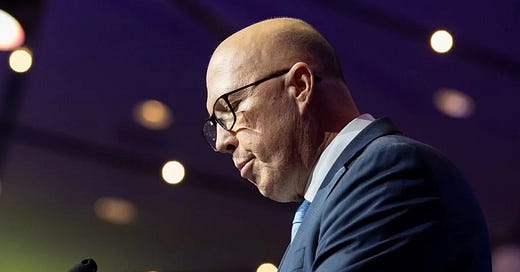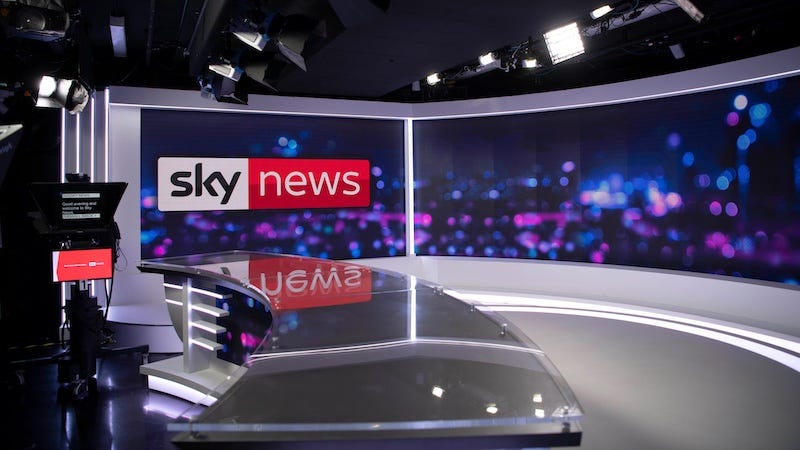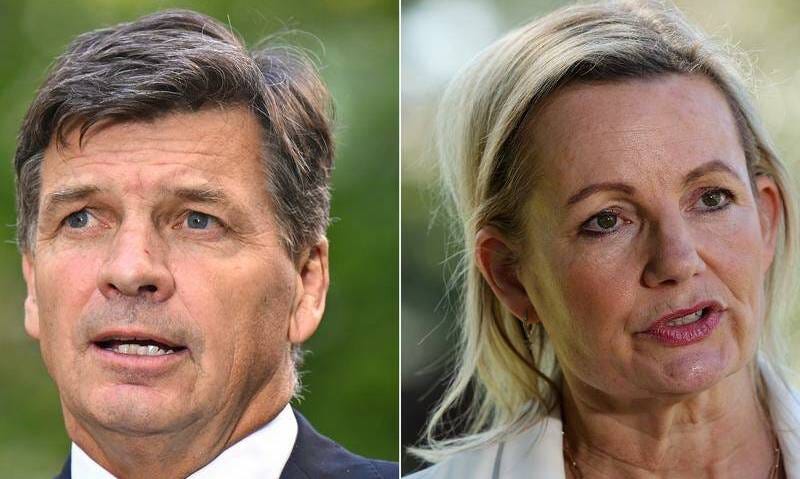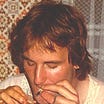The collapse of a party: what’s next for the Liberal Party?
We should never underestimate the ability of a wounded political party to return from the wilderness but the future looks bleak for the Liberal Party.
If a federal election produces a once-in-a-generation victory for one side of politics, it usually comes with a matching catastrophe on the other side – and that’s exactly what unfolded for the Liberal–National Coalition in the 2025 election. The scale of the Liberal Party’s defeat was unprecedented in Australian political history and, at this stage, it’s difficult to see how the party can quickly return to political respectability. Peter Dutton, delivering a sombre and funereal concession speech, acknowledged this reality with a tone of resignation on election night: “Tonight’s not the night that we wanted... but we’ve worked hard every day over the course of the last three years to do our best for our amazing country.” These were hollow words in the face of the devastating results – both for the Liberal Party and for Dutton personally, who became the first sitting Opposition Leader in federal history to lose his own seat at a general election.
This wasn’t just a bad night for the Coalition; it was a political disaster. The primary vote collapsed to 32.1 per cent, the lowest ever recorded for the Coalition, and the two-party-preferred vote sank to 45.1 per cent – another record low. On a proportional basis, they managed to secure just 42 seats, with the Nationals holding steady (15 seats) while the Liberal Party bore the full brunt of voter dissatisfaction. Sixteen seats were lost by the Liberal Party, its campaign was weak, uninspiring and incoherent, and the leadership of Dutton and his deputy, Sussan Ley – widely considered to be tone deaf and out of touch – received a terrible verdict from the electorate.
The Liberal Party’s collapse was severe in the urban heartlands that once defined its base. The party lost its footing in both inner and outer metropolitan areas, transforming what was once a powerful national political force into a party with diminishing urban relevance to something that looks like a second-tier regional organisation – trailing behind even the Nationals in coherence and purpose. Such an electoral wipe-out not only makes a comeback in 2028 virtually impossible, but also raises the possibility that the party may not return to power until the 2030s – if then – and it’s quite possible that the next Liberal Party Prime Minister hasn’t walked through the doors of parliament yet, or even signed their party membership form.
The causes of this collapse are now being openly debated and will be carefully dissected, even among the party’s traditional supporters. For years, the Liberal Party has followed a political and ideological compass that pointed sharply to the right – egged on by the Murdoch media and figures such as Paul Murray and Peta Credlin. Yet in moving further into the culture-war wilderness, the party abandoned the very people it was originally created to represent. Formed in 1944 as an urban and suburban middle-class party, the Liberal Party lost not only traditional strongholds like Kooyong, Deakin, Wentworth and Mackellar, but also the outer-suburban aspirational seats that often decide elections. While the seat of Goldstein in Melbourne may have been clawed back, and Kooyong came close, it wasn’t nearly enough to offset the collapse elsewhere.
Even conservative commentators now admit the party must urgently refocus on urban Australia or risk permanent political irrelevance. The Coalition might be intact in name, but the Liberal Party’s soul – and its pathway back to national leadership – has never been in greater doubt.
The culture wars that ate the Liberal Party
The Liberal Party’s catastrophic defeat in the 2025 federal election wasn’t just a rejection of its campaign or leader – it was a rejection of an entire political identity that has decayed over the past 30 years. This election felt less like a change of government and more like a mass flushing of the political drain – an emphatic rejection of the hard-right, culture-war-driven politics that has defined the Liberal Party since the Howard era. What began in the mid-1990s as a purge of moderates and a consolidation around conservative values has finally reached its logical endpoint: irrelevance in the very electorates that once formed the backbone of Liberal power.
And then, a dangerous complacency set in: the Coalition convinced itself that because it had managed to scrape through elections in 2016 and 2019 – largely with the aid of fear campaigns, divisive rhetoric and political luck – it could keep reusing the same formula indefinitely. When it lost in 2022, it treated the result as a temporary setback rather than a structural warning and, instead of recalibrating its offerings to the public, it doubled down. Instead of reflecting, it retreated further into its ideological bunker. Rather than modernising or making peace with shifting social norms and community expectations, the Liberal Party continued to indulge in reactionary tantrums – on race, gender, Indigenous issues, and immigration – hoping that the outrage would mask its deficiencies in policy development.
And still, after the thumping loss in 2025, some within the party’s ranks are pushing for more of the same. Sky News’ Rita Panahi and former party vice-president Teena McQueen became outraged by the party’s supposed slide toward “Labor-lite” politics. Incredibly, they framed the failure not as a result of Dutton’s relentless negativity or his lack of vision, but as a consequence of him not being right-wing enough. McQueen lamented that the executive was “spooked” into softening their messaging on areas such as immigration and Welcome to Country announcements, as if doubling down on Trump-style culture wars could have saved the campaign. That this sort of commentary still finds a receptive audience within the party is a clear indication of how disconnected it has become from mainstream Australia.
At many levels, the Liberal Party appears dysfunctional. While it holds power in Queensland, Tasmania, and the Northern Territory at a state and territory level, these are anomalies rather than signs of vitality. Federally, it has become a hollowed-out shell: bereft of ideas, devoid of vision, and addicted to wedge politics. There is no forward-looking agenda, no appeal to the future – just an endless recycling of fear, resentment, and scapegoating. Its targets were predictable and uninspiring: attacks on the left and “wokeness”, Indigenous communities, migrants, China, and anyone vaguely “different”: the other. And yet somehow, the party leadership seems to think a narrow win in Goldstein or a near-miss in Kooyong justifies staying the course.
But this is a false hope built on fragile foundations. If Tim Wilson is now considered a core part of the party’s future, it really is a bleak future. His record as a local member in Goldstein was marred by controversy, arrogance, and underperformance – hardly a signpost for renewal. That he is now reportedly eyeing the position of Shadow Treasurer – or even the leader – highlights just how shallow the Liberal talent pool has become. The higher the ambition, the more intense the scrutiny will become – and Wilson’s past doesn’t suggest he’s built to withstand it.
At the heart of the matter is a crisis of purpose. The Liberal Party no longer seems to know what it stands for, beyond the protection of its own elite and the preservation of privilege. Certainly, the wealthy classes deserve representation, like everyone else in the community does, but the seats they hold at the table are far bigger than everyone else’s: a mainstream party that fails to listen to and reflect the broad interests of the electorate ceases to be a mainstream party: it becomes a niche faction masquerading as a movement. In refusing to listen – to really listen – to the Australian public, the Liberal Party has shown more about its own insularity and denial.
A leadership vacuum in the political wreckage
With Dutton losing his seat, the Liberal Party ended the election not just demoralised, but without a leader – and without a clear pathway forward. What remains of its leadership cohort is uninspiring at best: the contest for the top job has narrowed to Angus Taylor, currently the Shadow Treasurer, and Sussan Ley, currently the party’s deputy leader. Senator Jacinta Price, who defected from the National party room to the Liberal Party, has also placed herself as a joint ticket with Taylor, even though she’s only been in the party for less than a week, a move that isn’t likely to go down well with the more established and longer-term MPs within the Liberal Party.
There are also murmurings that Wilson, after narrowly won the seat of Goldstein, might raise his hand as well for the leadership contest. Of course, every party needs to have a leader, but even discussing leadership at this point feels like a pointless exercise, a distraction from the deeper existential work the party must do to avoid long-term irrelevance.
This isn’t just about choosing a new figurehead. It’s about rebuilding from the ground up – something the party should have begun after its defeat in 2022, but stubbornly refused to address. The Liberal Party has shrunk to a conservative rump: of the 42 seats retained by the Coalition so far, only 27 belong to the Liberals. Their identity is fractured, their membership base is ageing, and their unbreakable connections to bodies such as the Institute of Public Affairs and media echo chambers such as Sky News and News Corporation have stifled any capacity for genuine renewal. These partnerships might have once served as sources of influence and policy development, but they now act more like ideological anchors dragging the party away from mainstream Australia.
The scale of the rebuild ahead is massive – and might not bear fruit for a decade or more. While it’s unwise to rule out anything in politics – remembering that Labor returned to office in 2007 after the 2004 electoral wipeout – the 2028 election seems to already out of reach for the party. Even 2031 feels optimistic and it might be 2034 before the Liberals can even think seriously about forming government again. But to get there, the party needs to undertake a brutal reassessment of what it is, who it represents in the electorate, and whether it can be something more than a political receptacle for resentment and privilege.
Right now, it doesn’t matter who the leader is; Taylor, Ley, Wilson, Price or some other unknown figure. The party needs to stop obsessing over personalities and start doing the hard background work it’s neglected for years. Policy development, community engagement, renewal of local branches, outreach beyond the ideological base of young hyperactive MAGA wannabes and crusty old men who think political correctness has gone mad – these are the fundamentals the party has failed to invest in. Dutton was, at best, always going to be a leadership placeholder, and though his exit from Parliament may spare him the brunt of internal blame, his legacy is one of strategic failure and political delusion. That he genuinely believed the commentary from Sky News about his prime ministerial destiny only highlights how deeply cut off from reality the leadership had become.
Looking back, this trajectory has been long in the making. After John Howard purged the party of moderates in the mid-’90s, a pattern emerged. Tony Abbott took the party further right and weaponised ideological conflict. Malcolm Turnbull, though personally progressive, failed to bring the party with him. Scott Morrison replaced substance with slogans and ran a government mired in secrecy, incompetence, and scandal. And then came Dutton – a figure more feared than respected, and ultimately unable to bring the party out of its culture war death spiral.
Now the blame game has begun. It’s evident from their past behaviours that Taylor is unsuitable and politically compromised, and Ley lacks charisma or strategic instinct, while also being politically compromised with previous scandals over misuse of travel allowances. Former staffers and insiders point to the lack of economic credibility, the absence of serious policy costings, and an election campaign that felt reactive and unfocused. There’s plenty of blame to go around – and while Dutton is an obvious target, he shouldn’t be the only one. The rot has been systemic, stretching back over a decade or more, across multiple leaders and factions.
The Liberal Party’s fall was not inevitable – but it has been well deserved. Unless it faces up to the full scale of its collapse, it will never recover as a major political force. And perhaps the hardest part of all: the Liberal Party must learn to listen. Listen to the electorate, not just the loudest voices in the media, and then go on to regurgitate the noise from these voices as political garbage. Listen to communities. Listen to critics. Listen to those who have left the party, and those who might be willing to return – if there is something worth returning to.












It's unbelievable that some claim the Liberals must go even further to the right, when it was going to the right which caused the party to become largely irrelevant. Do they want to join One Nation, muttering incoherently in the nutty corner?
The Independents who have seized former Liberal seats would once have been Liberals, but were driven out when the Liberals stopped being liberals and became Conservatives.
I was visiting Mackellar during the elections, where Dr Sophie Scamps cruised back into office. Dutton was regarded as being like some weird stranger here, not saying anything which appealed to an electorate of educated, progressive young families and retires. His claim that 'The Liberals would always be better economic managers' was laughed at by people who remembered Morison's repeated deficits and mindless stunts and Tony Abbott, who comes from the Northern Beaches, being such a failure as PM.
As things stand, the Liberals are irrelevant here now, and in most of NSW.
As for successors, Susan Ley comes across as shrill and nasty, while Angus Taylor failed to produce a single credible economic plan. As one unhappy Liberal polling said, the Liberals had nothing to campaign with, no message to sell.
Thanks Eddy and David.
Even if the Liberals were to do the work and do community outreach and develop fit for purpose policies, the scale of this defeat, exacerbated by the single member constituency electoral system, may leave the party in a diminished state. Does anyone in the party room want to wait 8-9 years for a realistic shot at government? Like the WA Liberals, even an 18% swing against the state ALP primary vote hardly moved the dial. They risk becoming the permanent opposition like the ALP from 1949 through the 60s.
In dire straits such as these, unconventional thinking may be the only way out. Both the Greens and LNP face tremendous challenges with the resources of state now firmly controlled by the ALP which will be able to sandbag its own seats knowing it only needs 34.69% of the primary vote. It can ignore 65% of the rest of the country.
While it is unlikely, there may be the opportunity for an unlikely alliance on this issue if the LNP knows it is shut out from Government and the only way back is some form of proportional representation. The task of winning back 36 individual seats is just too daunting and with the splintering of the electorate being what it is.